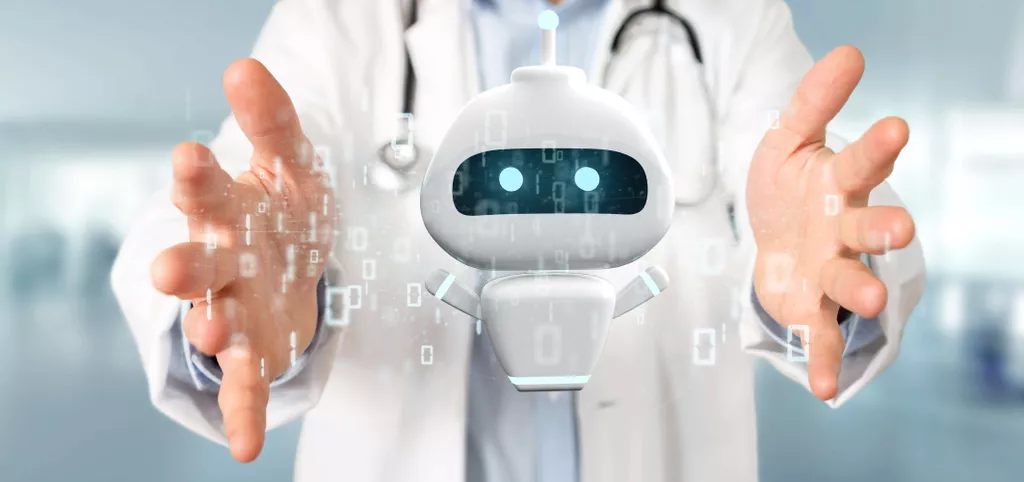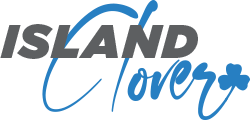In customer service, ChatGPT can provide quick and accurate responses to customer’s questions and concerns, in a conversational and natural way. In content creation, ChatGPT can be used to generate high-quality, human-like text quickly and with accuracy. In e-commerce, ChatGPT can enhance the online shopping experience by providing personalized and efficient service to customers.

This applies to the healthcare industry as well, because people are looking for instant justification or answers to a health condition they might be facing. By analyzing large amounts of medical data, AI has enabled healthcare providers to make more accurate and timely diagnoses. It has also helped develop personalized treatment plans tailored to the unique needs of individual patients. AI-powered predictive analytics has helped identify high-risk patients and prevent disease before it becomes severe.
How Medical Chatbots transform the Healthcare Sector
With their ability to understand natural language, healthcare chatbots can be trained to assist patients with filing claims, checking their existing coverage, and tracking the status of their claims. Despite the saturation of the market with a variety of chatbots in healthcare, we might still face resistance to trying out more complex use cases. It’s partially due to the fact that conversational AI in healthcare is still in its early stages and has a long way to go. More sophisticated chatbot medical assistant solutions will appear as technology for natural language comprehension, and artificial intelligence will be better. A further benefit of a medical chatbot is that it can furnish individualized healthcare services, guidance, and assistance to patients.
Robotic process automation in healthcare is a rapidly growing AI technology with the potential to transform the healthcare industry. Many healthcare organizations are turning to RPA to streamline repetitive processes and improve efficiency. A healthcare chatbot can link patients and trials according to their health data and demographics, boosting clinical trial participation and accelerating research. After rule-based and ML chatbots, who would have thought there would be another? Well, we needed another one because we want to have the best of both worlds. The hybrid approach uses both linguistic and machine learning models to create a third solution- conversational AI chatbot.
What are the Pros and Cons of AI chatbots in Healthcare?
Chatbots can automate repetitive tasks, such as appointment scheduling, prescription renewals, and symptom tracking, increasing efficiency for both patients and healthcare providers. There is no doubt that the healthcare industry is experiencing rapid technological advancements and changes every year. These transformations are making their way to hospitals, research labs, and doctor practices. AI chatbots in healthcare are the conversationalist type meaning they run on the rule of machine learning and AI development. Chatbots are changing the game for healthcare organizations like never before. In a fast-paced environment that depends heavily on its resources, it becomes even more important for critical tasks to be put on autopilot.
- This feature enables patients to check symptoms, measure their severity, and receive personalized advice without any hassle.
- Chatbots use natural language processing (NLP) to comprehend and answer patient queries.
- Every day, you have thousands of patients walking in with different symptoms.
- Customer feedback surveys is another healthcare chatbot use case where the bot collects feedback from the patient post a conversation.
- The success of the solution made it operational in 5+ hospital chains in the US, along with a 60% growth in the real-time response rate of nurses.
- We live in the digital world and expect everything around us to be accurate, fast, and efficient.
For example, a user can ask the chatbot to provide information about walk-in clinics nearby and their corresponding wait times. The chatbot would then gather real-time data from various clinics, taking into account factors such as distance and current patient volumes. Based on this information, the chatbot would present a list of clinics, along with their estimated wait times, allowing the user to make an informed decision on where to seek immediate medical care. You’ll need to define the user journey, planning ahead for the patient and the clinician side.
How to get the most out of your chatbot?
Automating some tasks and quickly responding to basic questions result in reduced medical service expenses and free up doctors to tackle more complex issues. The medical chatbot can assist as an interpreter for non-English speaking patients. The bot can then interpret during consultations and appointments, eliminating language issues. It’s important to note that chatbots are never meant to supplant healthcare professionals – they make their jobs more straightforward and accessible to patients. Thanks to AI chatbot healthcare, remote patient health status monitoring is easier than ever.
What are chatbots not used for?
For example, chatbots should not be used to deal with customer grievances. Every individual is unique; hence each problem is different and automation or over automation could lose you some valuable clients or potential customers.
By collecting and analyzing patient data, these digital helpers are helping researchers identify patterns and trends in healthcare, leading to the development of more effective treatments and interventions. With the use of AI, these chatbots can quickly and accurately analyze large volumes of data, improving the efficiency of medical research. And what type of information should hospitals and clinics be sharing about these bots to give their patients the best experience possible?
Healthcare Chatbots Overview: Role of AI, Benefits, Examples
The model can be used to automatically summarize long pieces of text, making it easier for people to consume and understand. One of the main ways ChatGPT is used in content creation is through text generation. This can be useful for creating things like news articles, blog posts, and social media content, without the need for a human writer.
Generative AI was all the buzz at ViVE 2023 – FierceHealthcare
Generative AI was all the buzz at ViVE 2023.
Posted: Tue, 04 Apr 2023 07:00:00 GMT [source]
The chatbots help the users to know the right drug and the use of a drug, especially for breastfeeding women. It helps the doctors to keep track of the correct medicines which they are giving to their patients. The bot also helps the doctors to keep track of the ingredients of the medicines. Selecting the right platform and technology is critical for developing a successful healthcare chatbot, and Capacity is an ideal choice for healthcare organizations. Many healthcare experts feel that chatbots may help with the self-diagnosis of minor illnesses, but the technology is not advanced enough to replace visits with medical professionals.
Booking medical appointments
By providing patients with the ability to chat with a bot, healthcare chatbots can help to increase the accuracy of medical diagnoses. This is because bots can ask questions and gather information from patients in a more natural way than a human doctor can. Additionally, bots can also access medical records and databases to provide doctors with more accurate metadialog.com information. AI-powered chatbots and virtual assistants can provide patients with basic medical advice, answer technical questions, and help schedule appointments. As seen in this blog, healthcare service providers use chatbots to offer real-time medical solutions to patients by communicating with them and asking them a few simple questions.

Due to this highly labor-intensive approach, rule-based chatbots aren’t preferred where intelligent conversations are expected. They are slow to develop and the chatbot developer continuously needs to add more conversational flows to the system to increase its robustness. When the human replies with the dates, the chatbot answers with the list of specialists available in San Jose on those dates, along with a link to book the appointment. The model can be trained on a large corpus of text and then used to generate new pieces of text that are similar in style and tone.
What are Chatbots Used for in Healthcare? Key Use Cases
Healthcare chatbots are going to stick around for a long time unless another high-end tech comes. Moreover, it also seems impossible that chatbots will replace doctors, for the time being, they can take up the role of a primary consultant to assist patients in daily life. In coming years, AI chatbots in healthcare will prevail everywhere and humans would be needing them a lot. Nonetheless, there are very diverse ways in which AI chatbots are transforming the healthcare industry like Improving patient experience etc. AI chatbots are providing patients with quick, accurate information and support, improving overall satisfaction and reducing wait times.
- Chatbots can collect the patients’ data to create fuller medical profiles you can work with.
- Patients providing personal information are more comfortable doing so because of the conversations’ anonymity, particularly when it comes to mental healthcare.
- A chatbot can ask patients a series of questions to help assess their symptoms.
- A big challenge for medical professionals and patients is providing and getting “humanized” care from a chatbot.
- It can even improve the day-to-day life of healthcare practitioners, letting them spend more time looking after patients, raising staff morale and improving retention.
- AI-powered chatbots and virtual assistants can provide patients with basic medical advice, answer technical questions, and help schedule appointments.
Various Chatbot use cases in the healthcare industry have proven beneficial in terms of improving customer responses. Multiple countries have developed chatbot-dependent apps which give users information about a risk based on the queries and GPS tracking app access. Chatbots can take the collected data and keep your patients informed with relevant healthcare articles and other content.
Integrate with existing backend technology
Patients are encouraged by the tailor-made Chatbot, which addresses their misunderstandings regarding the surgery and provides information responsively and conversationally. By communicating with users in a human-like manner, a medical Chatbot aids the job of a healthcare provider and helps them enhance their performance. Chatbots aid patients to manage their own care and increase engagement in treatment procedures. Chatbots can become the personal nurse for patients that remind them to take their medications, and provide a short consultation on their symptoms when it is implemented with the medical database. Hence, for a healthcare organization, using chatbots for scheduling will reduce the staff’s workload and eliminate “overbooking” which happens because of human error.
How Americans View Use of AI in Health Care and Medicine by … – Pew Research Center
How Americans View Use of AI in Health Care and Medicine by ….
Posted: Wed, 22 Feb 2023 08:00:00 GMT [source]
What is the use of chatbots in mental health?
Today's mental health chatbots can provide support and advice. They track your responses over time and offer coping strategies for when you're feeling down. They can also connect you with mental health resources, such as hotlines and support groups. Mental health chatbots are not a replacement for in-person therapy.


